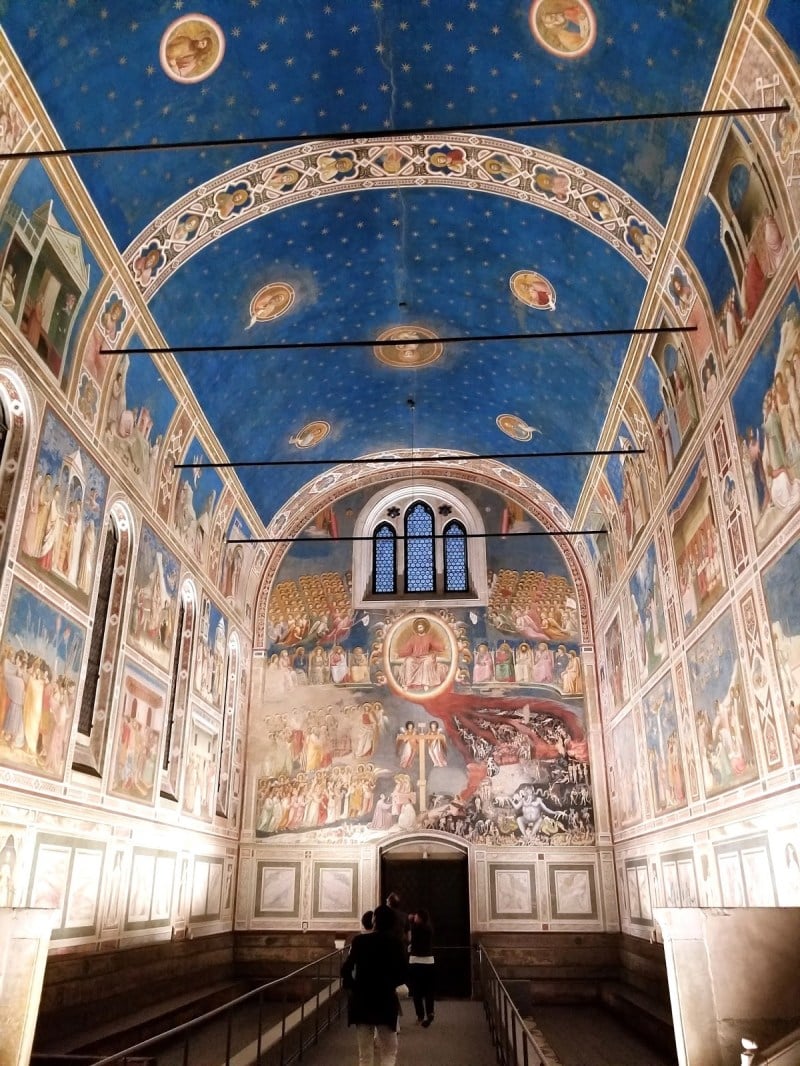Ben sets his sights on new frontiers of the navel — and sometimes beyond.
The mosaics of the early Christian churches at Ravenna are some of the few surviving Byzantine mosaics of their era. Ravenna’s position at the outskirts of the empire, territory later lost to the Lombards, shielded it from the iconoclastic movements of the eighth and ninth centuries, which ended in the loss of most of the Empire’s existing religious art. That is why, ironically, to get a sense of Justinian I’s monumental art program of the sixth century, you may be better off traveling to the Veneto than to the seat of his empire in modern day Istanbul.
The colors in these mosaics are famous. Their bright teals, oranges and greens, elaborate borders and stiff gradients contribute to pictures that are more textile than painterly. It is clear in these, as is general of Byzantine art, that resemblance is not the highest aim.
The Basilica di San Vitale first got me interested in the mandorla — the full-body variety of halo which shows up, in some form, in most eras of Christian art, usually around Jesus or Mary, and usually to mark them as outside the temporality of their human lives. They are in the mandorla often because they are emerging from heaven back into the world. The mandorla is sometimes circular, sometimes more vaginal in shape — hence the name, “almond” in Italian, with all the symbolism of a cosmic delivery that that suggests.

At San Vitale, a Christ at the peak of the central decorated arch abutting the knave has a particularly beautiful mandorla composed of an incomplete rainbow, circled by imaginative marine animals, possibly dolphins.
The reflective tiles give this mandorla the quality of fish scales, and its rainbow reminds me most of the partial rainbows of nature — on the side of a trout or half-emergent in mist. It’s clear from the mandorlas of this period that there was some difference in opinion about what colors exactly constituted a rainbow.
Giotto’s famous Scrovegni Chapel in Padua took up this tradition centuries later. He would have seen the mosaics at Ravenna. His large fresco of the Day of Judgement has Christ in Majesty enthroned inside a rainbow mandorla of similar colors to San Vitale’s, with this one, of course, surrounded by the chaos of Revelation. Onto the blue sky of the visible world, the mandorla seems to be in the action of opening, revealing a messiah that is colossal and frightening. With his left hand he condemns the wicked to a violent, Dantean hell, and with his right hand he raises up his saints, depicted with the early realism that he originated. But the mandorla remains flat, symbolic and mysterious. It cannot participate in the move toward realism because it is meant to annotate something we have never seen, the edge of a cataclysm breaking on this world from the other.

To me, it suggests our spectrum of visible light itself has broken open, finally revealing something which has been behind it. The rainbow suggests a notion of heaven as a realm not available to the senses, which, touching reality, mixes or confounds them — the essential problem of all representational religious art. In this sense, the symbolism of a rainbow mandorla is very sophisticated — a near-scientific insight perhaps lost with the move into Renaissance verisimilitude, when mandorlas became more often wispy and unobtrusive, or disappeared altogether. Everything gets more subtle. At Padua, to make sure his point is taken, Giotto stationed angels above the chapel window, rolling up a thick blue canvas to reveal depthless gold. With a start, we realize this was our sky.
